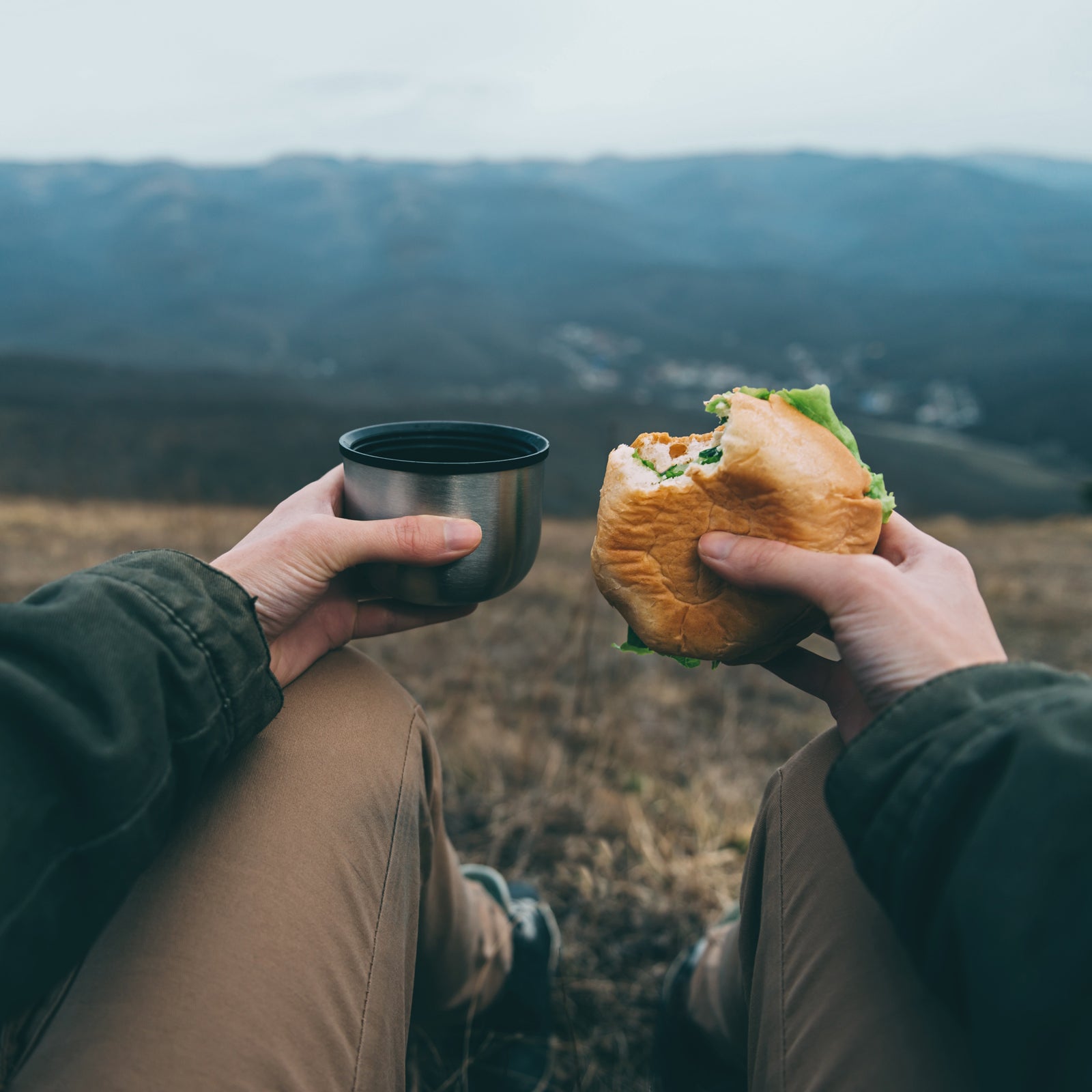Intuitive eating isn’t a new thing. In 1995, dietitians and published , now in its third edition, presenting a nondiet approach to food that focuses on learning to give your body what it needs. The idea of abandoning diets and the pursuit of weight loss was radical at the time—and in many ways, it still is.
But��the anti-diet movement has grown significantly��since the nineties—and for good reason. A in Social and Personality Psychology Compass looked at several comprehensive weight-loss studies from the last few decades��and found that while diets can lead to short-term weight loss, most people will regain lost weight within a few years. Even more unnerving, a similar in Nutrition Journal found that dieting can��lead to��weight gain, along with a preoccupation with food and your body, lower��self-esteem, and disordered eating��behaviors.
In the wake of this backlash, many popular weight-loss��plans are distancing themselves from the word “diet.” claims not to be a diet, despite a long list of off-limits foods, and Weight Watchers recently rebranded itself as the wellness-focused����but still assigns point values to foods and requires that you track them. Intuitive eating, on the other hand, involves��no rules that tell you how or what to eat.
What Is Intuitive Eating?
Intuitive eating is guided by —including��“honor your health,” “respect your body,”��and “make peace with food”—meant to help you get more in tune with your own hunger, fullness, and personal preferences. “You’re the only expert on your body,” says Tribole, a registered dietitian and coauthor of Intuitive Eating. “Only you know how you feel.”
This��can be challenging. For most people, there’s a lot to unlearn—essentially, all of the diet messaging you’ve ever heard—before you can trust your own food instincts.
has been a registered dietitian for ten years��but didn’t adopt the intuitive-eating approach until 2015. “My past experience with disordered eating gave me a different perspective.��Early in my career��I recognized that a lot of diet advice could lead to disordered behaviors��or even a clinical eating disorder,” she says. She considered leaving the field of nutrition altogether��but then came across��intuitive eating and the nondiet approach, “which aligns with, and gave me a language for, my health and nutrition philosophies.”
Generally, people find their way to intuitive eating after years of failed yo-yo dieting��or when food rules start to feel oppressive. A common fear is that when you give yourself permission to eat what you want, you’ll only eat things like cookies, doughnuts, and ice cream. And��while that might be the case at first, it’s not what happens in the long term.
“It’s possible that given food freedom all of a sudden, you may eat cookies all day tomorrow. And that’s OK. It’s just one day of your life,” Caplan says. “But eventually, you’ll get tired of eating cookies. You’ll want something else.” She finds that, eventually, most intuitive eaters end up eating a pretty varied, balanced diet.
Tribole agrees. “It’s the permission paradox,” she says. “In the beginning, there’s so much excitement over the cookies, because they were always a little bit off-limits before. But when you get to the point where you truly believe you can have them whenever you want, you start to ask, ‘Do I really want them? Do I want them right now? Do I like how they feel in my body?’” That’s not to say you’ll never want cookies again, just that it’ll get easier to eat a couple when you want them and��then move on with your day without guilt.
How to Do Intuitive Eating
Quiet Your Inner Critic
A big step in learning to be an intuitive eater, says Caplan, is recognizing and silencing your internal food police. “Say you’re scanning a restaurant menu, and the food police are saying, ‘That’s not healthy. That’s too many servings. That’s too high fat.’ That voice is fueled by external messaging, but it also feels like your own,” she says.
“You have to start working on differentiating your own voice from that food-police voice,” Caplan says. Maybe you think about ordering pasta for lunch, then decide against it. First you think, I really like this pasta dish, so I’m going to eat it,��but then your mind goes to, Well, I had carbs at breakfast, so I don’t need them at lunch��or��This dish is probably too many servings, so I shouldn’t eat it. “Even though this feels like a stream-of-conscious thought, you can separate out the two voices,” Caplan says. “There’s a line you can draw that says, This is where my voice stopped��and the food police came in.” It takes practice, but eventually you can push food rules out of your head.
Stop Moralizing
Food isn’t good or bad. “That way of thinking leads you to internalize:��I’m eating a bad food, therefore I’m bad,” Tribole says. “It’s a really black-or-white way of thinking, but actually, health and nutrition exists on a gradient.” Yes, some foods are more nutrient dense than others, but you don’t need to eat only those foods in order to be healthy.
That’s not to say that good nutrition has no place in intuitive eating. Keeping your health in mind when making food choices is totally in line with intuitive eating, but being rigid about healthy eating isn’t. “The difference is perspective and flexibility,” Tribole says. “It’s not pass or fail.” There’s nothing wrong with wanting to eat a healthy diet, if that’s important to you. It’s judging yourself for eating things you deem unhealthy that’s problematic.
Tribole makes a point of differentiating guilt, which is bad, from regret, which can be a learning experience. Maybe you eat nothing but an apple for breakfast��and regret it when you’re starving at 10 A.M. Or��maybe you eat a huge bowl of ice cream right before bed��and regret it when you have a hard time falling asleep. The next time,��you’ll know to eat a bigger and more well-rounded breakfast��or a smaller scoop of cookies ‘n’ cream.
Invite Nuance
Two of the ten intuitive eating principles are about honoring hunger and respecting fullness. That doesn’t mean you have to obsess over only eating when you’re hungry and always stopping when you’re full.
In fact, there are situations when it’s in your best interest to put hunger and fullness aside. Both Caplan and Tribole are experienced distance runners, and they work with athletes regularly. Tribole was one of the 267 women who qualified for the first women’s U.S. Olympic Marathon Trials, in 1984, and one of the 197 who finished; Caplan is a trail runner,��coach, and the founder of the .
“For the purpose of sports nutrition, I’ll often have someone eat when they’re not hungry, before or after a hard workout,” Caplan says. “Not everyone feels like eating at 6 A.M., I identify with that. But I also identify with not eating and being hungry 15 minutes into a run.” Instead of honoring hunger, think of it as figuring out how food makes your body feel in different situations��and honoring those feelings. If eating when you’re not hungry helps fuel a better workout��or minimize post-workout soreness, it’s a good choice.
This goes beyond sports nutrition. You might have to eat lunch before you’re hungry because of a midday meeting, or you might not be able to eat what you really want because it isn’t available. “Sometimes you just need to be practical about it,” Tribole says. “It’s not about having a nirvana experience every time you eat. It’s about fueling your body and feeling good.”
Take It Personally
Ultimately, intuitive eating is a way to make sure your needs are being met. What separates intuitive eating from traditional diets is that it’s 100 percent flexible—it can (and will) look different for everyone. Even personalized meal plans or macronutrient and calorie recommendations “can’t account for day-to-day fluctuations,” Caplan says. No one needs to eat exactly the same amount of food every day, since no two days are exactly the same.
Plus, food is about more than just physical nourishment. “Overall health includes emotional and psychosocial health,” Tribole says. “If you find you’re turning down invitations to be social because you’re afraid there’s nothing you can eat, that needs to be looked at. What does that say about the life you’re living?”


